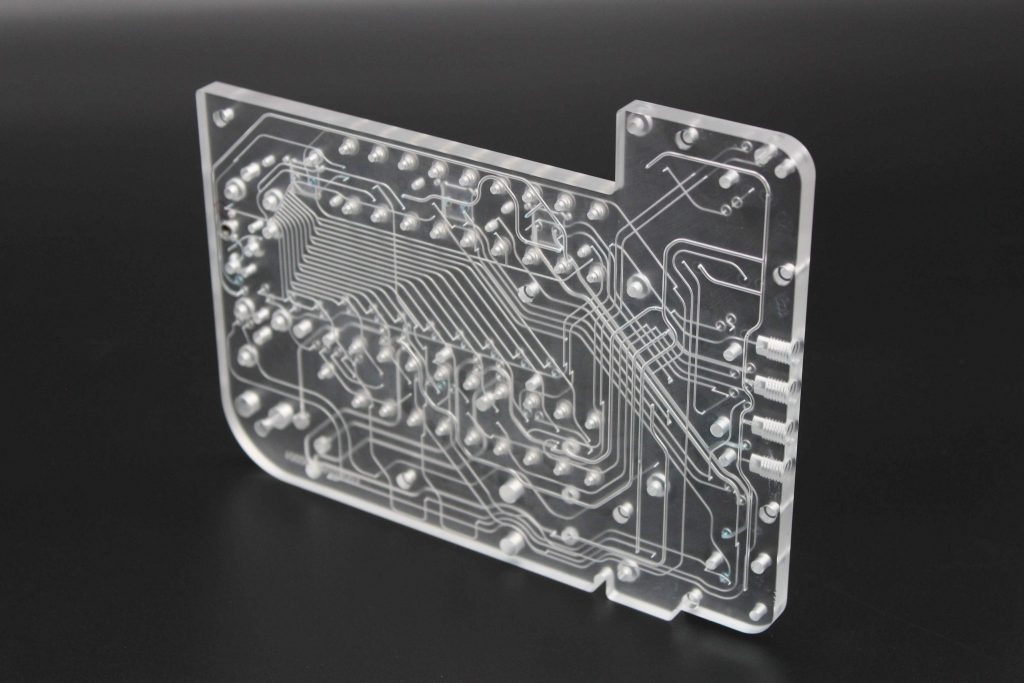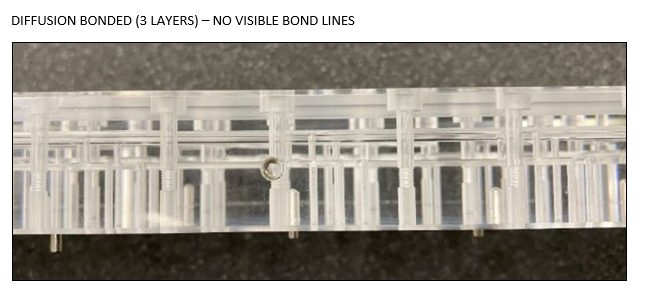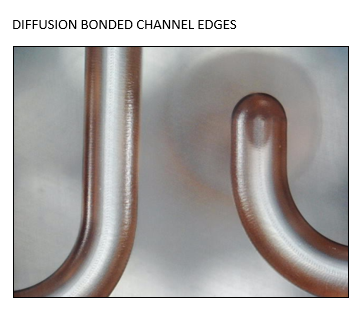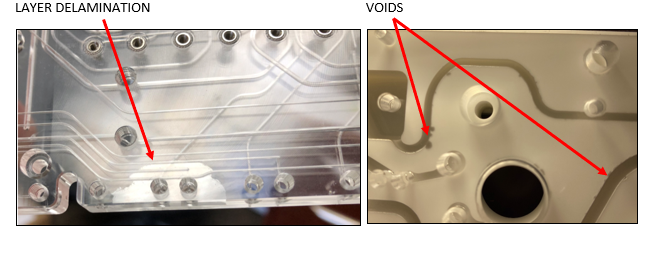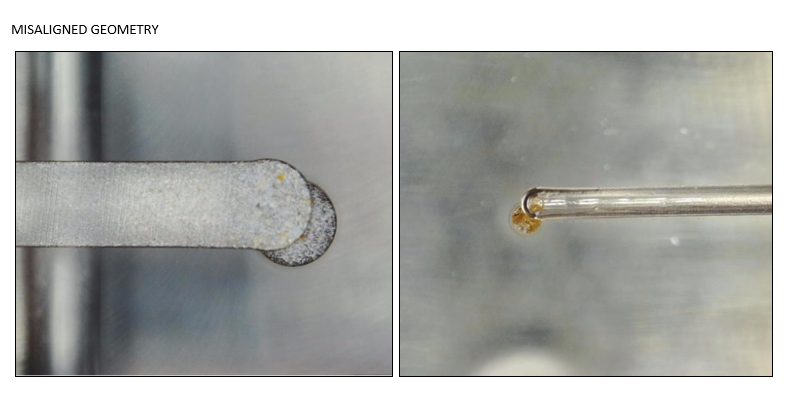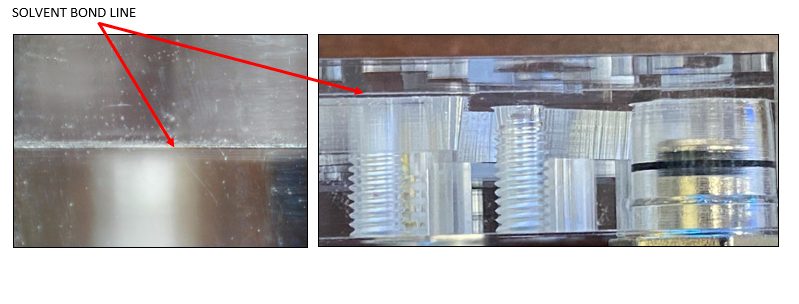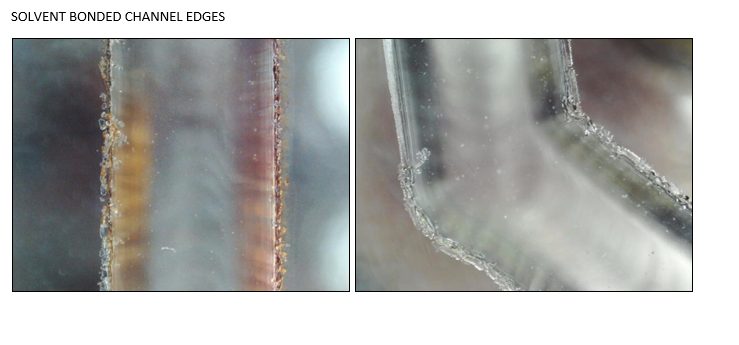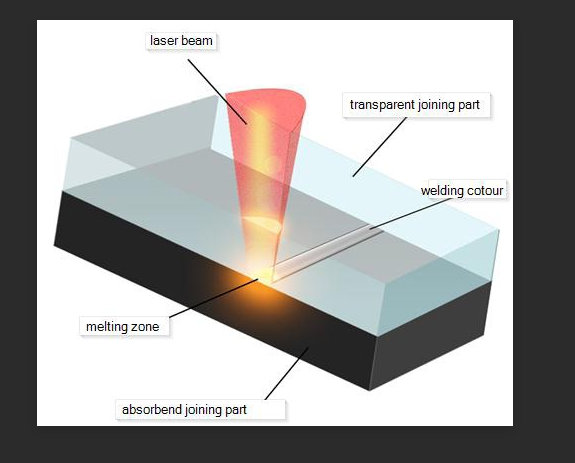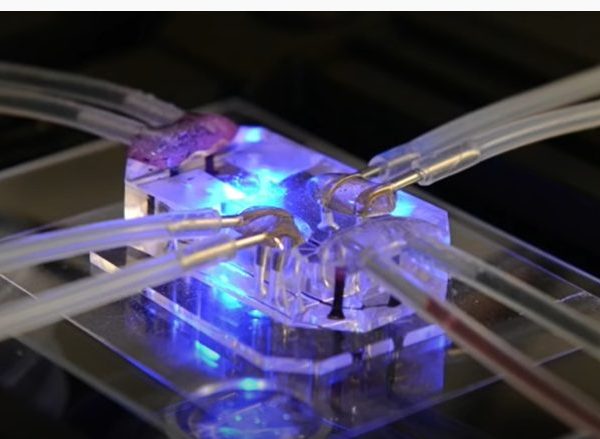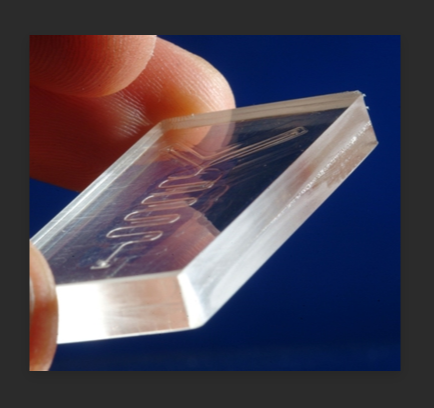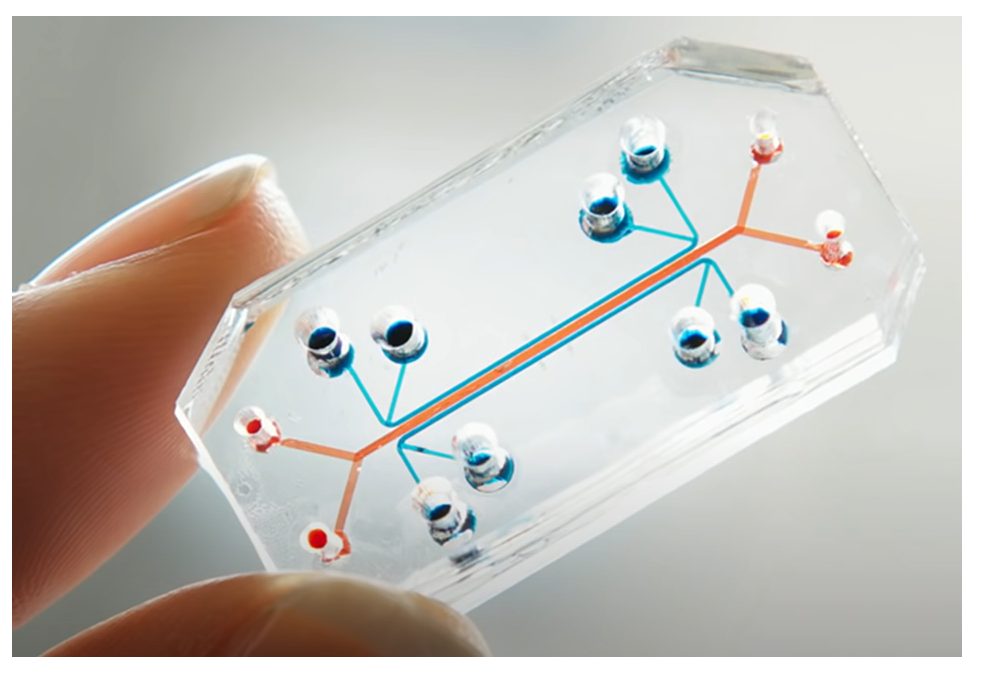What Is A Bonded Manifold?
A bonded manifold is a fluidic device, typically made from thermoplastics or metals, that concentrates many fluid paths into a small footprint on a single part. This provides many design, fuctional, and servicing advantages for a device that controls the flow of fluids throughout an application.
6 Common Types of Bonded Manifolds
- Diffusion Bonded Manifolds
- Solvent Bonded Manifolds
- Laser Welded Manifolds
- Plasticizer Bonded Manifolds
- Glued Manifolds
- Lab on a Chip (LOC) Manifolds
Bonding Thermoplastic Manifolds
There are multiple methods of bonding thermoplastic manifolds. What follows is a comparison of the various manifold bonding methods and technologies.
Diffusion Bonding Manifolds
Diffusion Bonding is the process of achieving a high molecular bond between multiple layers of plastic (normally acrylic or Ultem™) with varying machined features in each layer. These layers are then exposed to heat, pressure, and time in a proprietary, precise method to achieve a molecular bond. There are no chemicals, solvents, or other agents to contaminate the finished product process.
One of the many advantages of diffusion bonding is that very small flow paths or holes can be created in the individual layers and then combined in the diffusion bonding process. This creates a circuit board effect and minimizes footprint, tubing, and accessories that can complicate the design and create assembly and leaking issues. The result is homogenous bond that is almost indistinguishable from the solid plastic shape.
Solvent Bonding
Solvent Bonding uses a solvent to soften and dissolve the materials so that a chemical weld (bond) is achieved. Solvent Bonding involves using very aggressive chemicals that require precision, careful use, and present safety issues. Solvent bonding also does not provide a homogenous molecular bond. This type of bonding is typically used in pneumatic applications because of the bonding issues, gaps, voids, etc. that can create bacteria traps and adversely affect fluidic action in medical applications.
Solvent Bonding Visible Bond Line
Solvent Bonded Channel Edges
The individual plates have machined-in features, and then the solvent is applied to the bonding surfaces in alignment. The edges are then machined to minimize mismatch and improve appearance of outer edges. Limitations include channel widths and depths and the requirement for channels and holes to be distanced for solvent bonding purposes.
Laser Welding
Laser Welding uses focused laser radiation to bond plastic materials. This process is sometimes referred to as through-transmission welding. This process usually requires special acrylics, a pre-bond coating, extensive surface preparation, and can leave voids. Laser Welding requires an absorbing layer, a transmissive layer, material compatibility, a clear chemical additive, and clamping force.
Laser Welding Process
Lab on a Chip (LOC)
A lab on a chip (LOC) is a device that integrates several laboratory functions on a single integrated circuit. This chip is small and carries small fluid volumes. The basis for most LOC fabrication processes is photolithography. Most processes use silicon, glass, and ceramics. These micromanufacturing processes can be very complex, labor extensive, and costly.

